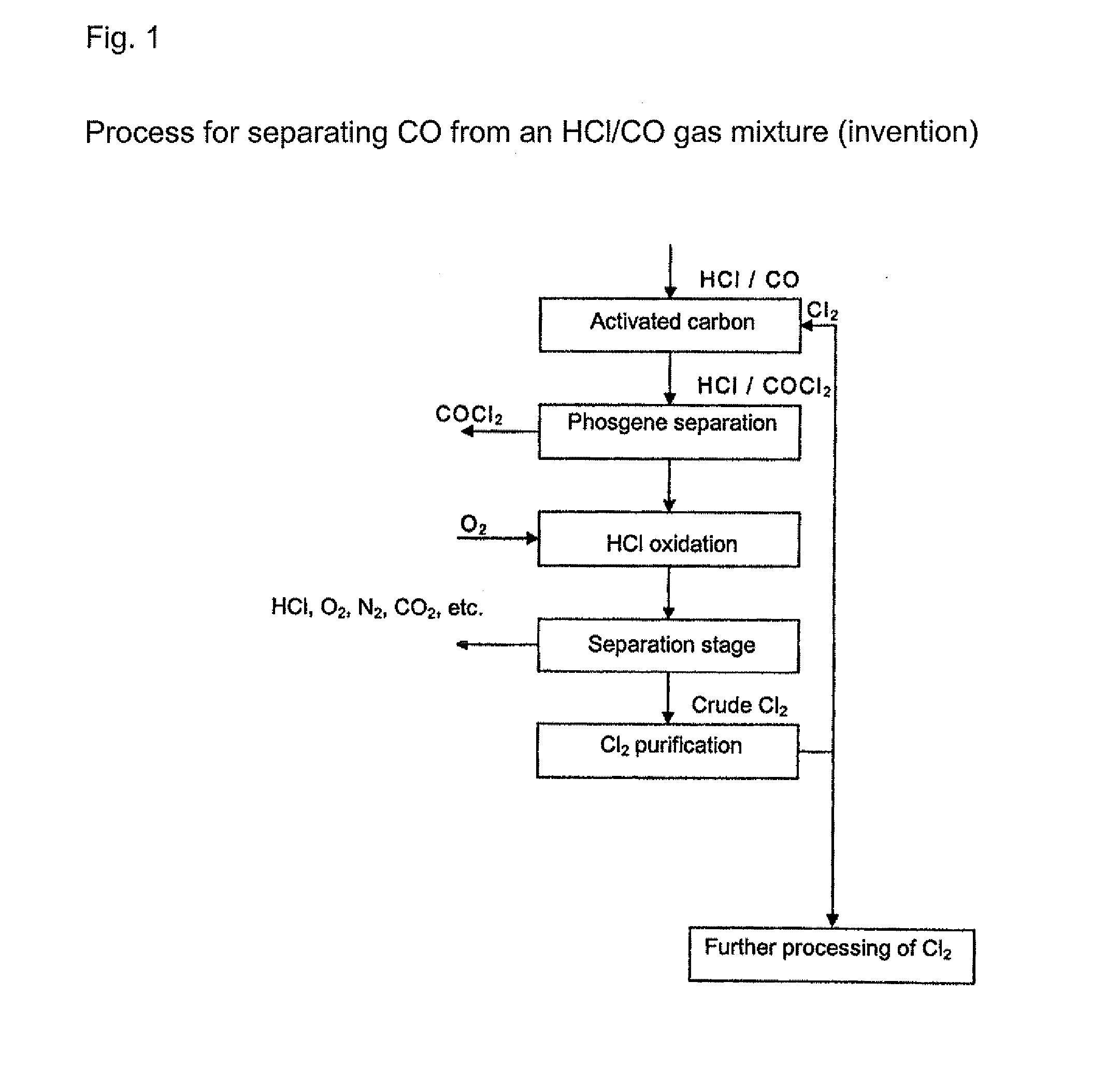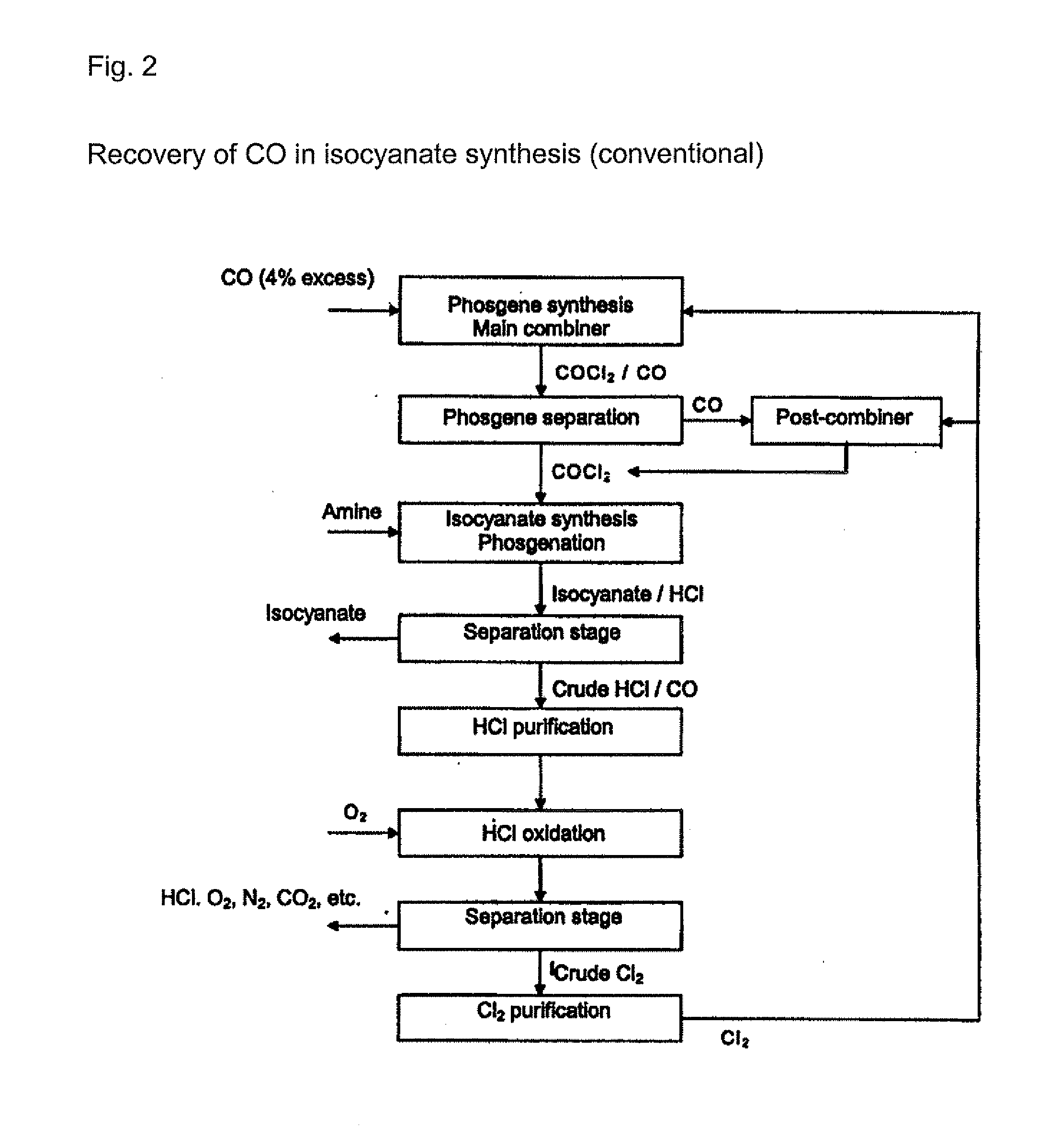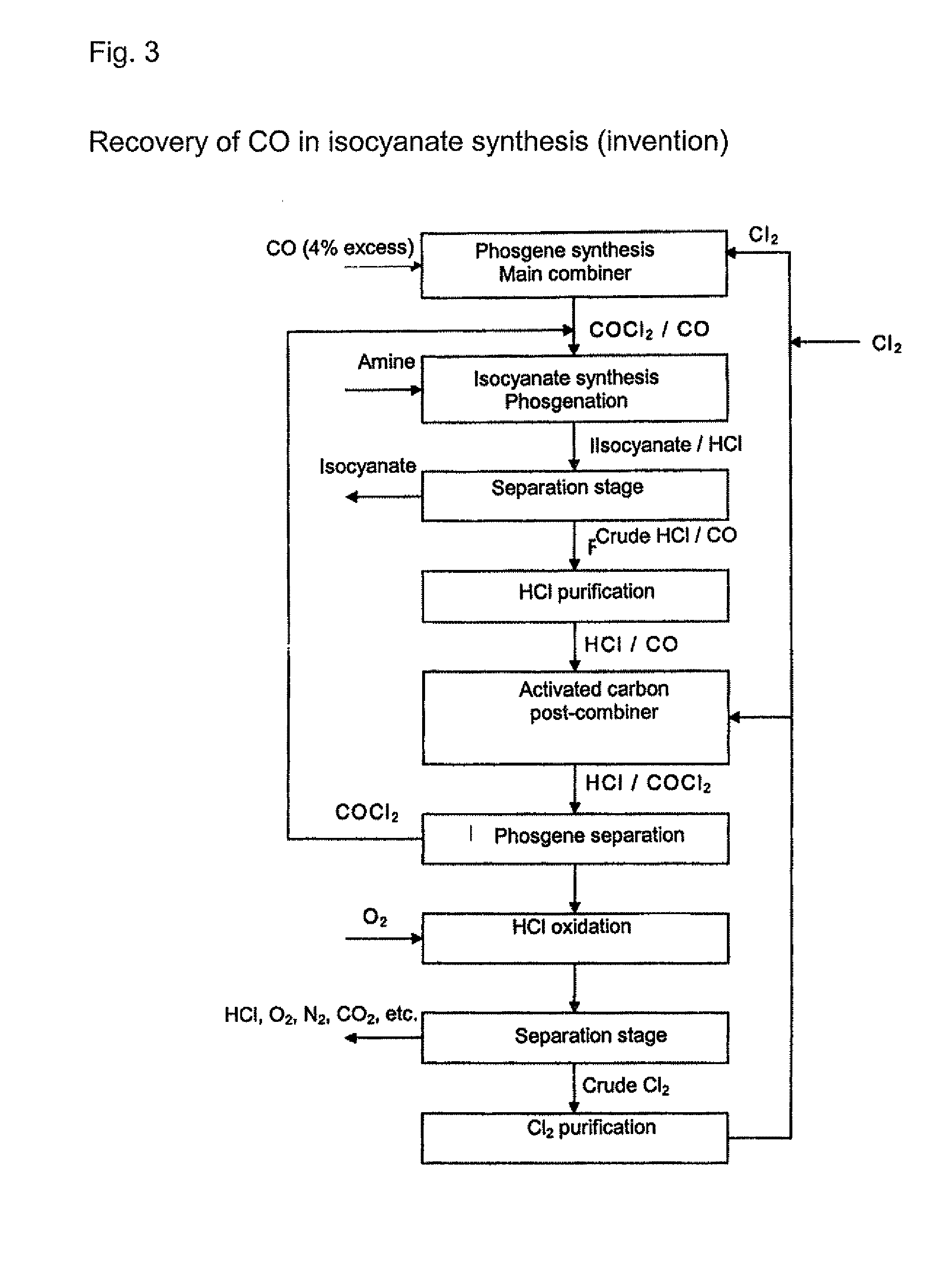Processes for separating carbon monoxide from a hydrogen chloride-containing gas
a technology of hydrogen chloride and carbon monoxide, which is applied in the preparation of carboxylic acid halides, chlorine/hydrogen chloride, inorganic chemistry, etc., can solve the problems of metal carbonyls reversibly or irreversibly, and the catalyst may not be activated with respect to hcl oxidation
- Summary
- Abstract
- Description
- Claims
- Application Information
AI Technical Summary
Benefits of technology
Problems solved by technology
Method used
Image
Examples
Embodiment Construction
[0019] As used herein, the singular terms “a” and “the” are synonymous and used interchangeably with “one or more.” Accordingly, for example, reference to “a gas” herein or in the appended claims can refer to a single gas or more than one gas. Additionally, all numerical values, unless otherwise specifically noted, are understood to be modified by the word “about.”
[0020] Any gas which contains at least hydrogen chloride (HCl) and carbon S monoxide (CO) can be used as the initial gas in the processes according to the invention. The initial gases are preferably process gases arising from isocyanate production by reaction of organic amines with phosgene or gases arising from the chlorination of hydrogen chloride. The initial gases that are used contain, for example, from around 0.1 to around 20 vol. %, preferably from around 0.5 to 15 vol. %, of carbon monoxide. The content of hydrogen chloride is, for example, from 20 to 99.5 vol. %, preferably from 50 to 99.5 vol. %. Other residual g...
PUM
 Login to View More
Login to View More Abstract
Description
Claims
Application Information
 Login to View More
Login to View More - R&D
- Intellectual Property
- Life Sciences
- Materials
- Tech Scout
- Unparalleled Data Quality
- Higher Quality Content
- 60% Fewer Hallucinations
Browse by: Latest US Patents, China's latest patents, Technical Efficacy Thesaurus, Application Domain, Technology Topic, Popular Technical Reports.
© 2025 PatSnap. All rights reserved.Legal|Privacy policy|Modern Slavery Act Transparency Statement|Sitemap|About US| Contact US: help@patsnap.com



